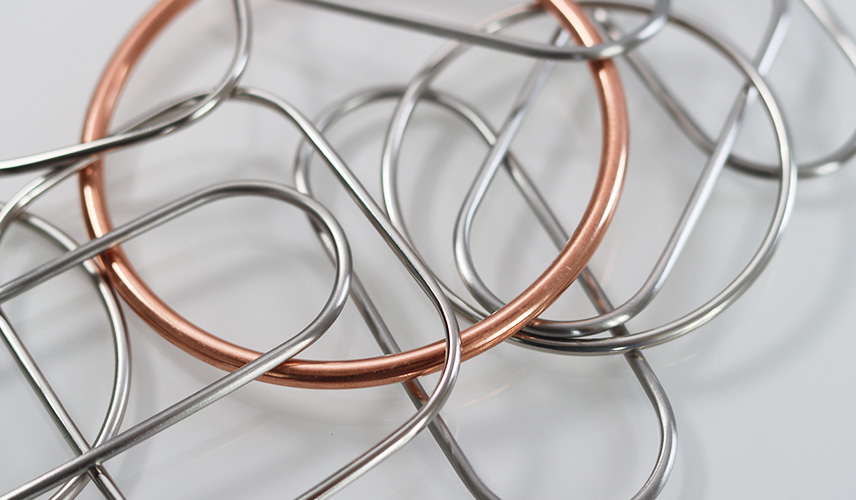Heat Treatment
Heat treatment is a controlled process that alters the microstructure of metals and alloys. It enhances the ring’s durability and performance by improving its resistance to wear, corrosion, and fatigue. Heat treatment of metal rings also improves their performance.
Why does a Metal Ring need Heat Treatment?
Heat treatment enhances the mechanical properties and performance of metal rings. The process alleviates stress induced during the ring’s production.
Heat treatment reorganizes the molecular structure, restoring it closer to its original state. Heat treatment of the material improves the material characteristics, resulting in a better seal performance. Therefore, heat treatment is always recommended for standard and spring-energized metal C-rings.
Industry standards often require heat treatment for metal rings. For example, the NACE MR0175 standard of the petroleum and natural gas industries requires specific heat treatment and hardness testing after the heat treatment.
Available Heat Treatments
The following table gives an overview of the available heat treatments of resilient metal rings at EUROSEALINGS.
| Heat Treatment | Material | |
HT1 | Work hardened | SS304, SS321, Inconel-600, Inconel 718, Inconel-X750, Elgiloy |
HT2 | Age hardened | Inconel 718, Inconel-X750, Elgiloy |
HT3 | Solution annealing | Inconel 718, Inconel-X750 |
HT4 | Solution annealing | Inconel 718, Inconel-X750 |
HT5 | Heat treatment NACE MR 0175 | Inconel-718, Elgiloy |
Work Hardening
Work hardening involves deforming the metal sealing rings at ambient temperature, which increases its hardness and strength.
The cold working process intentionally induces irreversible plastic deformation to exact the shape of the ring. As such, work hardening is a purely mechanical process that refines the grain structure, making the metal sealing rings more resistant to deformation under load.
Age Hardening
Age hardening, also called precipitation hardening, is a heat treatment that increases the strength and hardness of the sealing ring’s alloy at a relatively low temperature.
The process produces fine particles that impede the movement of defects in the crystal’s lattice, which are often the dominant carriers of plasticity. These particles serve a similar function as the particle substances in particle-reinforced composite materials.
Age hardening is particularly interesting for Inconel rings as it can lead to yield strength anomaly in nickel-based superalloys. The yield strength of the rings – the stress necessary to initiate plastic yielding – increases with increasing temperature, which is ideal, as most other materials tend to soften at higher temperatures.
Solution Annealing + Precipitation Hardening
Solution annealing followed by precipitation hardening is a two-step heat treatment process that can be applied to Inconel rings.
During the welding of the rings, ultrahigh fluctuations in temperatures can cause the materials to transition through a mix of phases and structures in tenths of a second. This short period does not allow for the crystals to dissolve and transfer to the thermodynamic stable target structure.
The solution annealing process involves heating the superalloy to restore the original structure. During solution annealing, the temperatures are elevated high enough to promote the atoms to move and re-crystallize, but also kept low enough, so that the mechanical stability of the ring remains intact. The metal is then rapidly cooled to maintain a homogenous structure.
After solution annealing, the material is heated to a lower temperature than used in the solution treatment and held there for an extended period. This causes the precipitation of fine particles within the grain structure of the alloy. These particles hinder dislocation motion, which strengthens the ring and increases its hardness.
The combination of these two treatments – solution annealing and precipitation hardening – is designed to optimize mechanical properties. For metal rings made from superalloys like Inconel, it enhances high-temperature strength and creep resistance.
